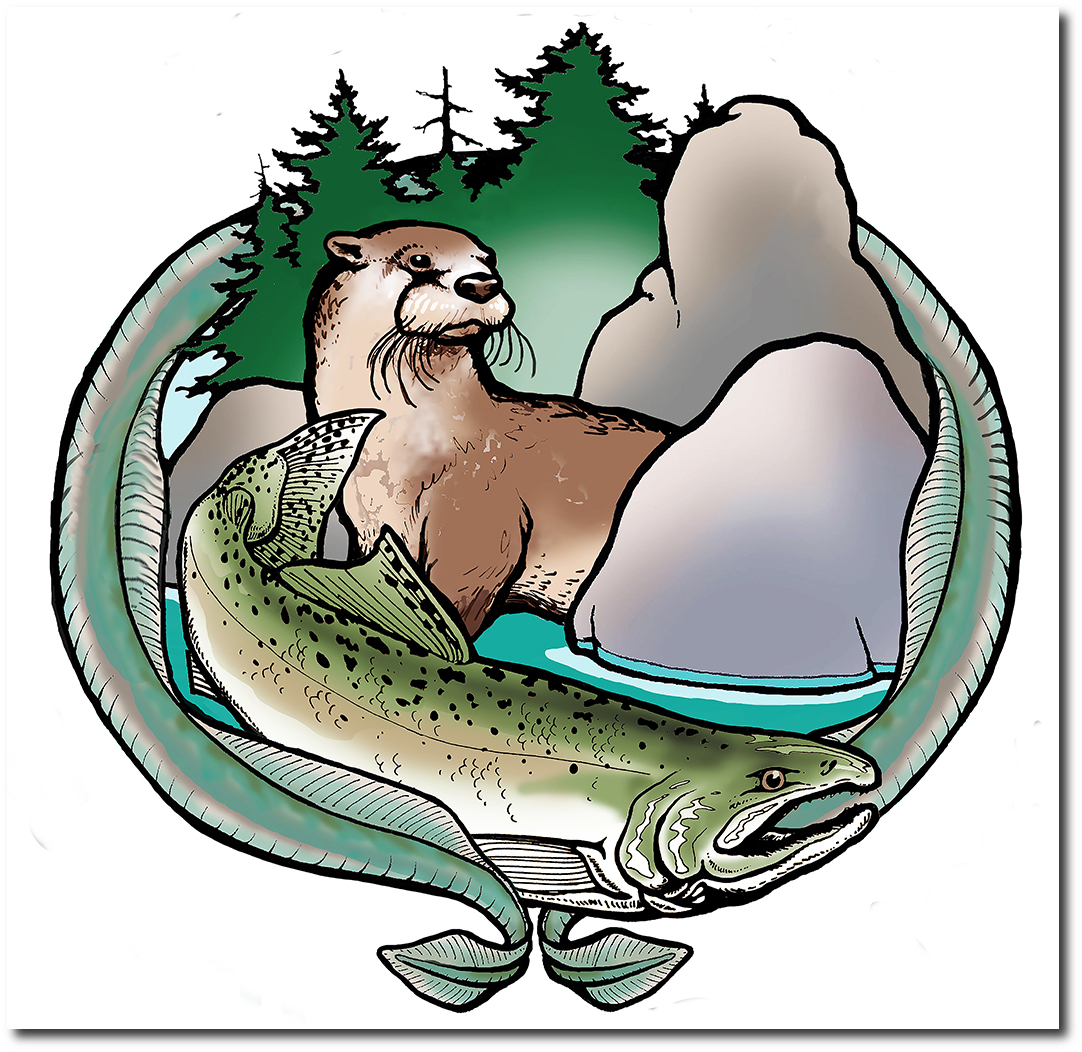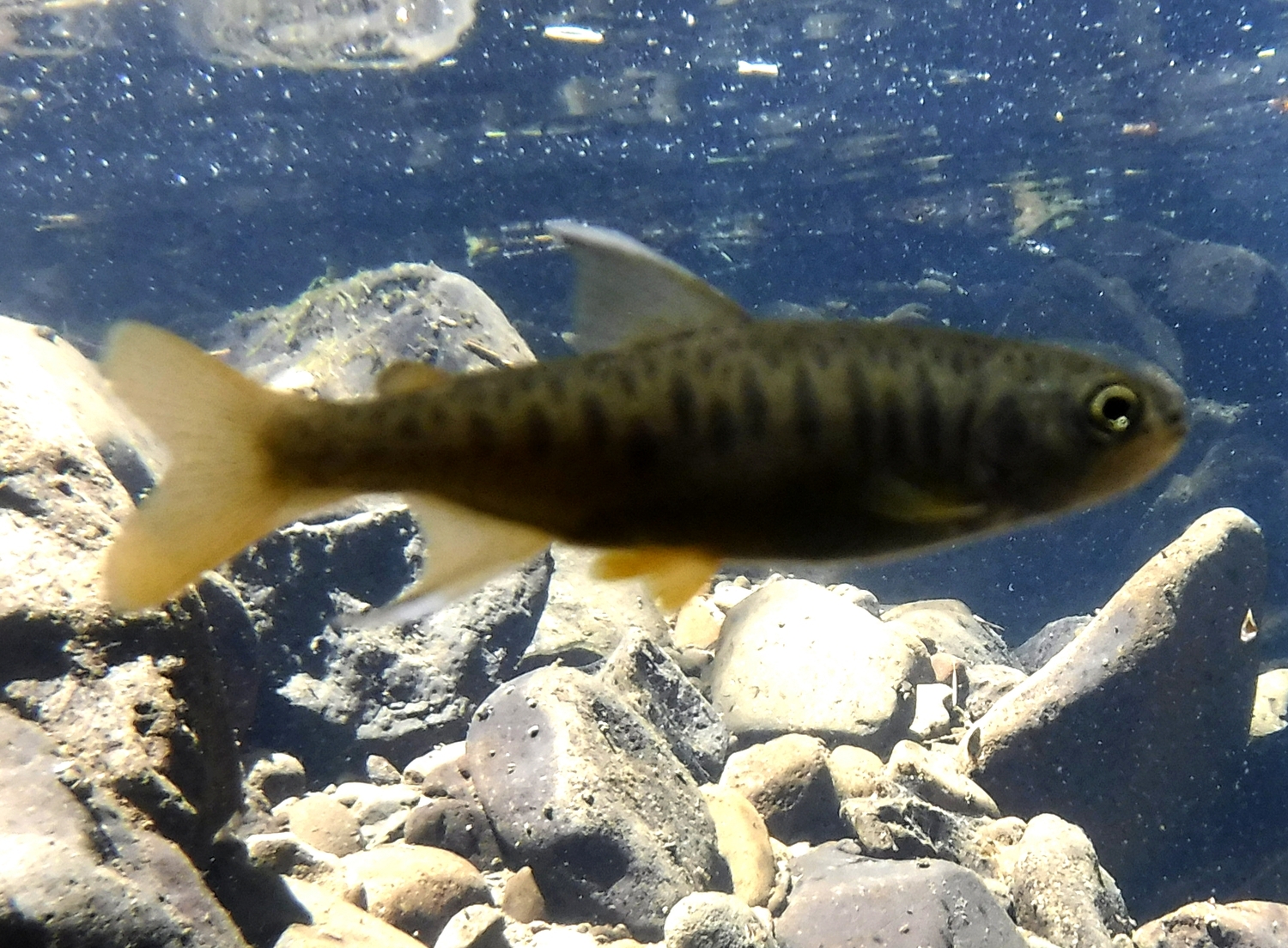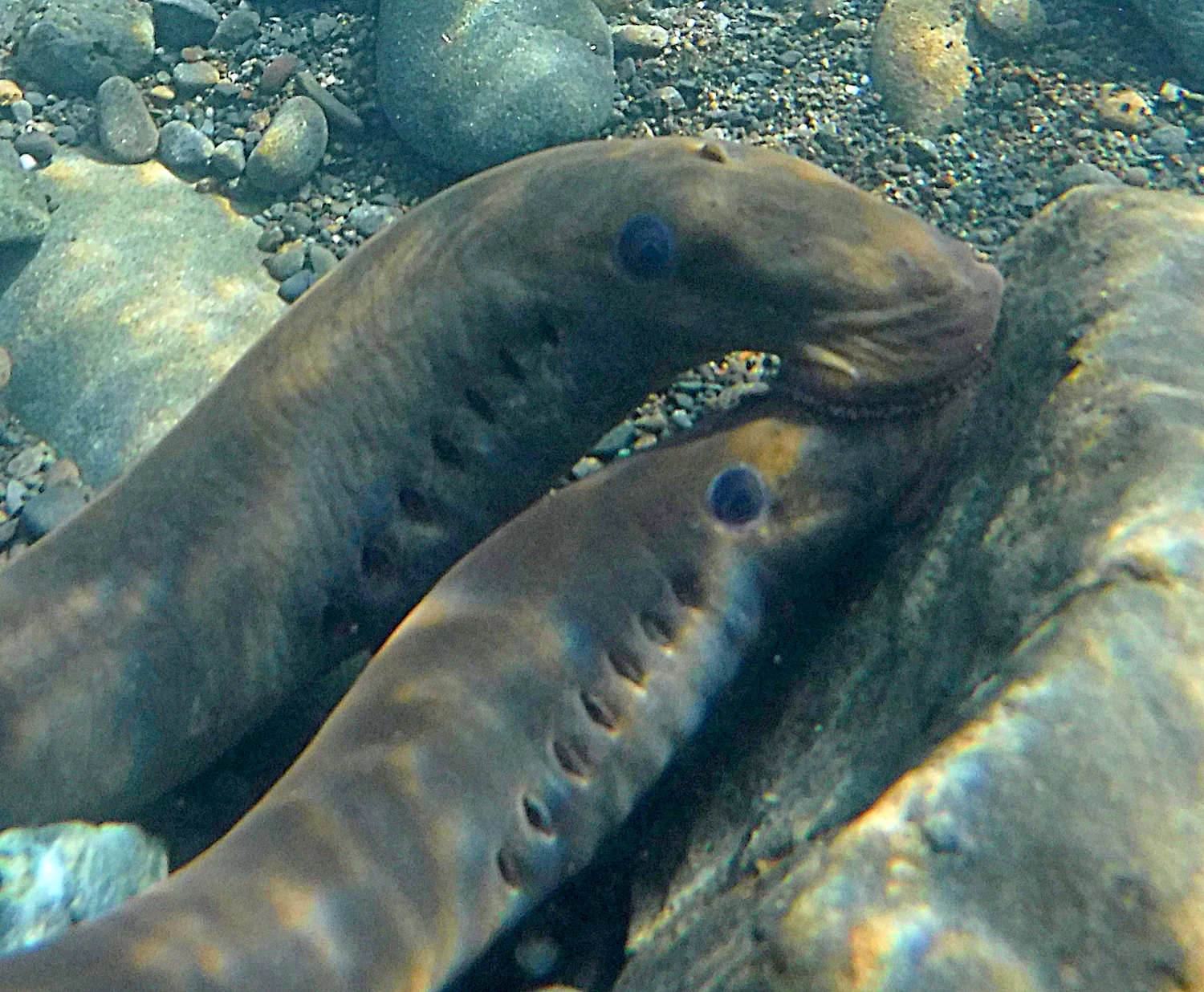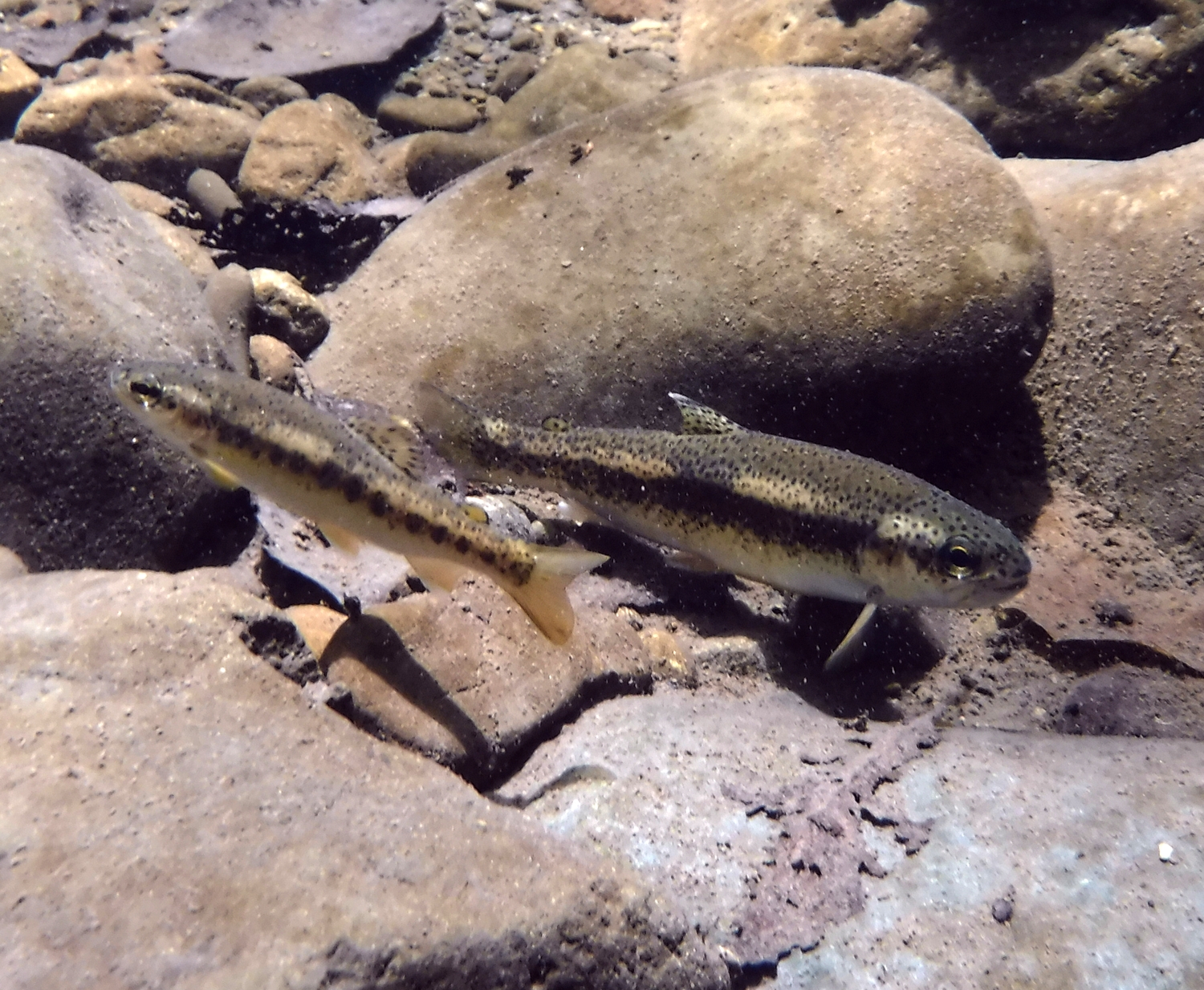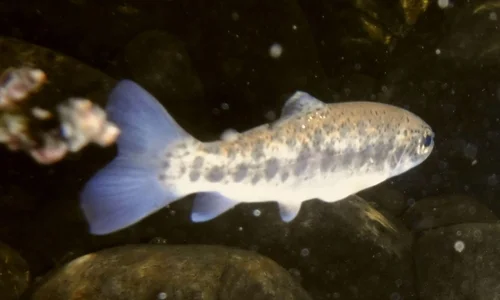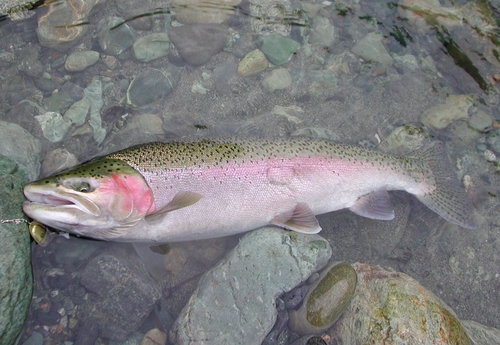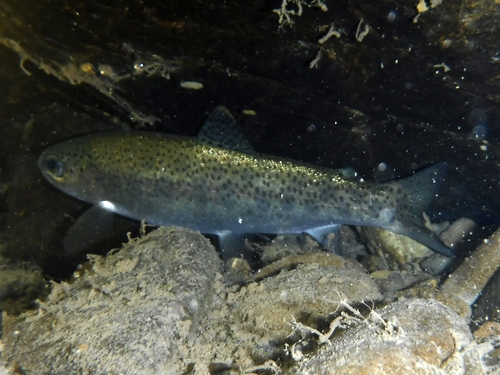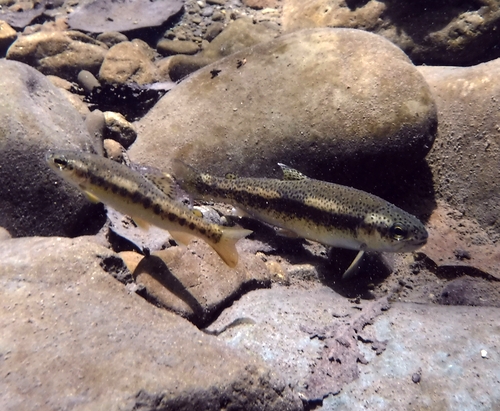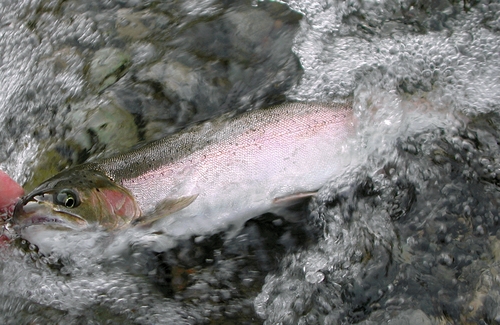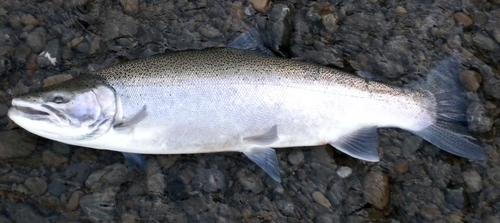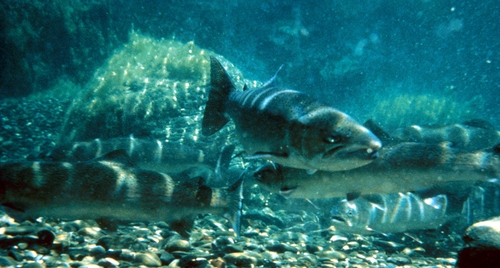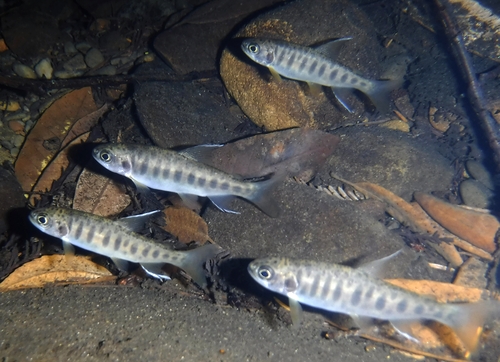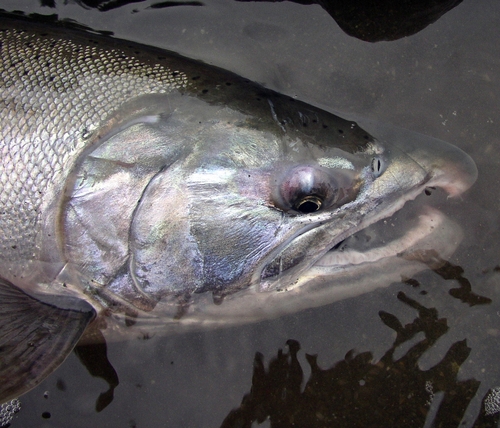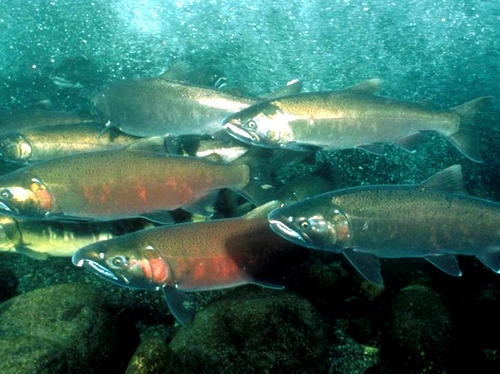Other Native Fish Species
Eel River fish life is a reflection of aquatic health, and ERRP takes strong interest in fish community structure. While the fall Chinook adult life history allows opportunity for population assessment, the three other Pacific salmon species do not. None the less, summer observations give us an idea of the distribution and abundance that are also indicators of population status. Lesser known native fish species like suckers and sculpin were once ubiquitous, but are now rare in some Eel River reaches and tributaries.
Winter Steelhead
The Eel River has a healthy winter steelhead population despite problems with flow and habitat degradation in some basins. Since their ability to leap waterfalls up to 15 feet high, they can access twice as much habitat that coho salmon or steelhead; therefore, their population is likely greater. Native rainbow trout in headwaters can also adopt a sea-run or anadromous life history, if washed downstream in storm events. While main Eel River habitat is too warm for summer rearing, many cold water tributaries within the watershed serve as refugia.
See Videos of juvenile steelhead
Cedar Creek, West Fork Van Duzen, McCoy Creek, Soda Creek, and Sproul Creek.
Summer Steelhead
The Middle Fork Eel River and Van Duzen River have runs of steelhead that return in spring and hold throughout summer in cold pools and spawn in early winter. They have evolved in tributaries fed by snow-melt and climate change is stressing summer steelhead. Although the Middle Fork has one of the larger runs in the State, returns are typically in the hundreds and summer steelhead are at risk of extinction. Juveniles of summer steelhead return to the river after less than one year in the ocean and are known as half-pounders. They are not ready to spawn and instead they follow the salmon run to opportunistically eat their eggs.
Coho salmon
The upper South Fork Eel River has one of the last large populations of coho salmon remaining in northern California and southwest Oregon. They spawn in tributaries from the headwaters near Branscomb and west side South Fork Eel River tributaries further downstream such as Hollow Tree, Indian Creek and Sproul Creek. Coho only spend two years in the ocean, so do not get as large as Chinook. Juveniles must have water colder than 62.4 F to rear and prefer shaded streams with lots of big wood. Coho streams like Jack of Hearts and Sproul Creek experienced habitat rejuvenation during 2016-2017 high flows. Other streams may be over-supplied with sediment and produce more coho in years with less robust flow, like Redwood Creek near Branscomb.
Photo by Mike Wallace
Coastal cutthroat Trout
The Eel River is the furthest southern extent of this species that was once abundant in the lower river and estuary. Like the steelhead/rainbow trout, the coastal cutthroat may adopt a resident of anadromous life history. However, they do not range far in the ocean and rarely attain a size of greater than 20 inches. The species is cold water adapted and is known to have ranged upstream into Wolverton Gulch in the lower Van Duzen River and upstream on the main Eel River as far as tributary Stitz Creek. Cutthroat have an orange slash below the mouth, more spots than steelhead especially below the lateral line, and teeth on the roof of their mouth.
Green Sturgeon
This ancient fish spawns in the Eel River in spring, but adults feed in the estuary all year long and in nearby Humboldt Bay. Green sturgeon can attain an age of 70 years and can grow up to nine feet in length and weigh over 450 pounds. Adults do not reach sexual maturation until they are 14-17 years old and immature fish wander up and down the West Coast feeding in bays and estuaries until maturing. Immature sturgeon have been noted feeding in the main Eel River near Alderpoint. Adults have been documented feeding in spring in the lower main Eel River and holding in deep pools there in fall. Learn about the Wiyot Tribe’s green sturgeon program. Read their green sturgeon report.
Pacific lamprey
This ancient fish from which the Eel River got its name is not a true eel, but rather has a cartilaginous skeleton. Adults dig gravel nests after the male locks onto the head of the female. Larval forms are known as ammocoetes and spend 5-7 years burrowed in sand or silt at stream margins. After ocean entry, they take blood meals from fish or marine mammals for 2-3 year before returning to spawn. Pacific lamprey were amazingly abundant in the Eel River basin from 2015-2017, with likely well over 100,000 adults returning. Video at Van Arsdale Fish Station indicates they migrate past Cape Horn Dam every month of the year except September.
See More video.
Wiyot Tribe Lower Eel Lamprey Survey
Wiyot Tribe Lamprey Management Plan
Photo by Phil Georgakakos
Sculpin
Both the prickly and coast-range sculpin are native to the Eel River, but both are rare as a result of predation by the non-native Sacramento pikeminnow. Studies comparing the lower Van Duzen with the Mad and Mattole rivers found that there were 80% fewer in the Van Duzen River. Sculpin are mottled in coloration and often reside under stream substrate where they feed on invertebrates at a younger age. Adults also hide under stream cobble and ambush small fish, like salmonid fry. The continuing depressed condition of sculpin in the upper South Fork Eel River is an indicator that the fish community is still being disrupted by pikeminnow
Sacramanto Sucker
The sucker is an important part of the Eel River fish community. It uses its mouth to suck algae off the stream bottom, also ingesting invertebrates. This species is warm water adapted and experienced a competitive release as a result of the 1964 flood, which caused the channel to widen and warm. This created ideal habitat for the sucker and they proliferated until the introduction of pikeminnow. Predation is suppressing suckers in the South Fork Eel River, but the main Eel River sucker population is showing resilience. The upper Van Duzen River is also a sucker refugia because pikeminnow can’t get over Eaton Roughs downstream.
Stickleback mating – Big Rock Creek
Three spined stickleback
The stickleback is little studied, but it would seem that its population are depressed related to pikeminnow predation. On surveys of the lower Eel River in 1980, UC Davis found this species to comprise 57% of all fish observed during snorkel dives. Today stickleback are far less common in main river environments, although the species is still widespread.
